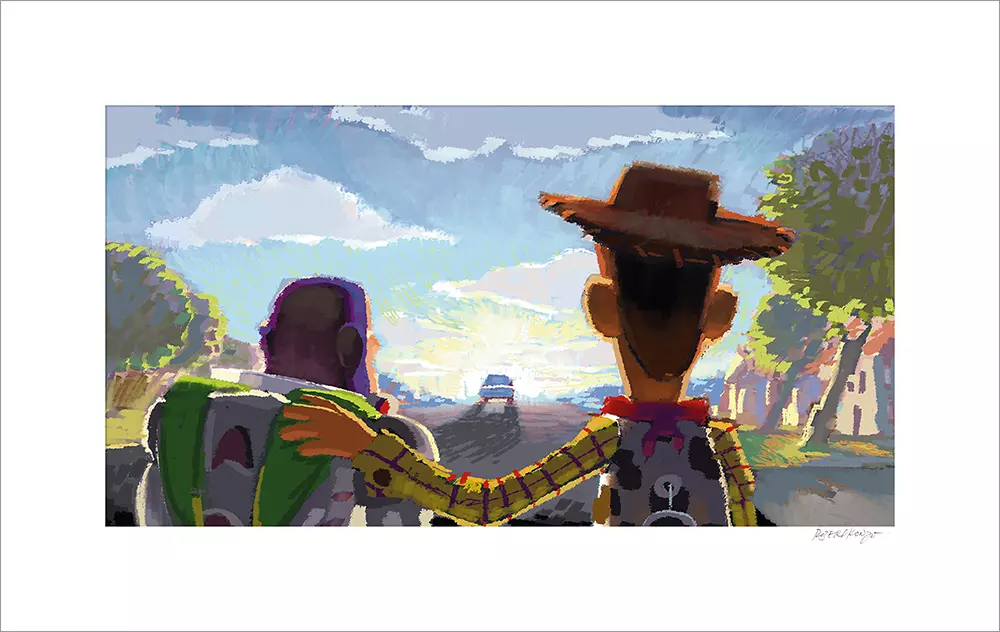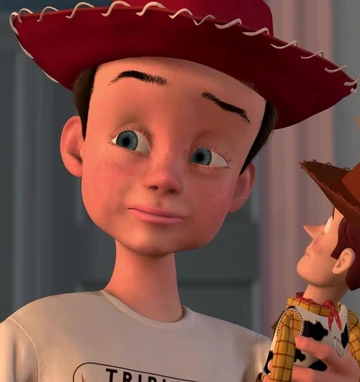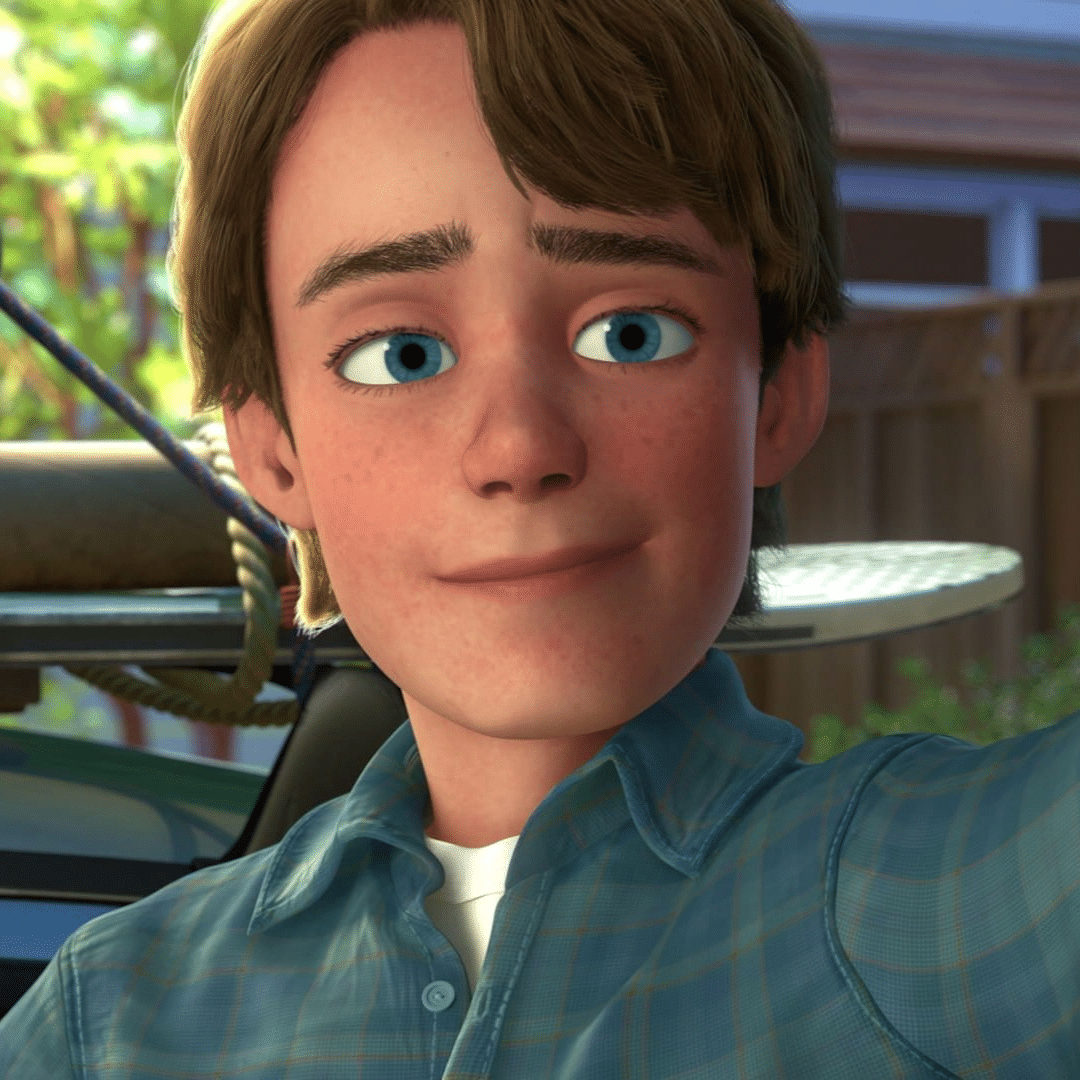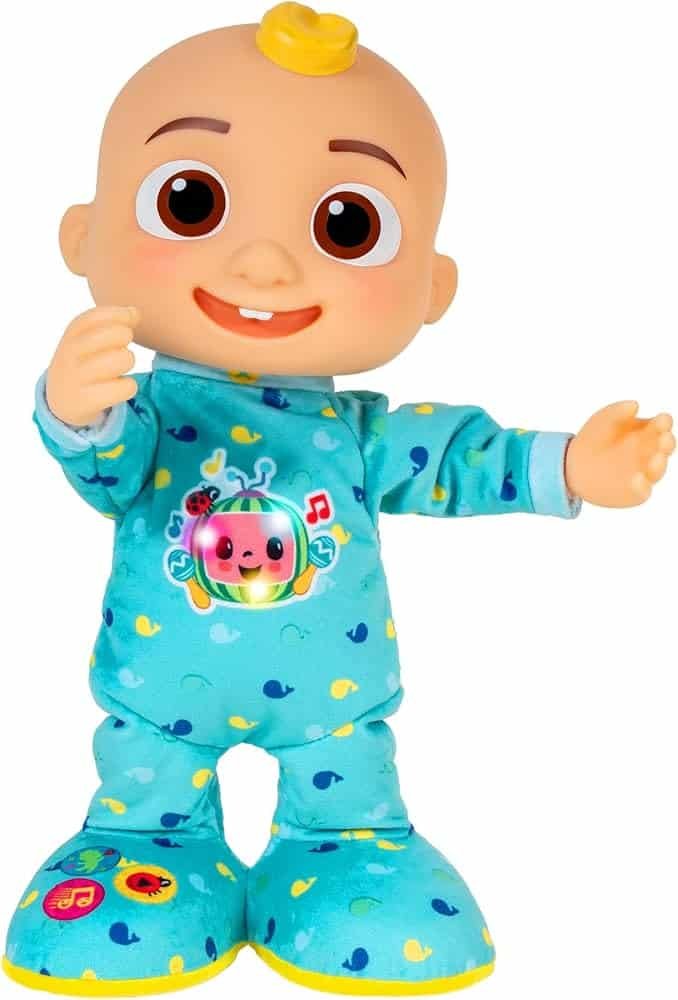Andy from Toy Story is a beloved character. His toys capture imaginations worldwide.
Andy’s bedroom is where magic happens. His toys come to life, sharing adventures unknown to him. They face challenges and form bonds that teach valuable life lessons. Andy’s innocence and love for his toys create a charming backdrop. As he grows, the dynamic between him and his toys changes.
It reflects the journey from childhood to adulthood. This emotional transition is beautifully portrayed in the Toy Story series. Through Andy’s eyes, viewers experience nostalgia, joy, and the bittersweet nature of growing up. His story resonates with audiences of all ages, reminding us of the power of imagination and the importance of cherishing our childhood memories.

Credit: www.youtube.com
Introduction To Andy Toy Story
When you think of Pixar’s “Toy Story,” Andy is a name that immediately comes to mind. He’s the boy whose toys spring to life when he’s not around. Andy’s character is more than just a backdrop; he represents childhood innocence and imagination. But how did this iconic character come to be, and what impact did it have on the world of animation? Let’s dive into the fascinating journey of Andy and the legacy of Toy Story.
Origins Of The Concept
The concept of Andy and his toys originated in the early 1990s. Pixar and Disney envisioned a world where toys had personalities, dreams, and adventures of their own. The idea was not just to entertain but to spark the imagination of children and adults alike.
Andy was designed to be relatable. He’s a reflection of every child who has ever cherished a toy. The creators drew inspiration from their own childhood experiences, making Andy’s world authentic and captivating.
Through Andy, the audience is invited into a world of wonder. He represents every kid’s dream of toys coming to life. This simple yet profound idea became the heart of Toy Story.
Impact On Animation Industry
Toy Story, with Andy at its core, changed the landscape of animation forever. It was the first-ever fully computer-animated feature film. This groundbreaking technology set a new standard for animated movies, pushing the boundaries of storytelling and visual effects.
Andy and his toys brought a new depth to animated characters. They were not just caricatures but had emotional arcs, personalities, and relationships that audiences connected with. This emotional connection paved the way for more complex narratives in animation.
Think about how you felt watching Andy’s story unfold. It wasn’t just about the animation; it was about the emotional journey. This shift in storytelling prompted other studios to focus on character-driven plots.
Can you imagine animation today without the influence of Toy Story? Its success opened doors for countless other animated films. Andy’s world proved that animation could be both visually stunning and deeply moving.

Credit: www.gallerynucleus.com
The Creative Minds Behind The Film
“Toy Story” is more than just a film. It’s a masterpiece crafted by talented individuals. These creative minds brought Andy’s world to life. Their vision and dedication transformed simple toys into beloved characters.
Understanding the team behind the film helps us appreciate its magic. The directors, producers, and writers played crucial roles. Each contributed unique skills and ideas. Let’s explore the key figures who made “Toy Story” unforgettable.
Key Directors And Producers
The success of “Toy Story” owes much to its directors. John Lasseter stands out as a visionary leader. His passion for animation brought toys to life. He worked tirelessly to ensure quality and innovation.
Producers like Ralph Guggenheim and Bonnie Arnold were vital too. They managed resources and schedules with precision. Their efforts ensured the film’s smooth production. Together, they guided the team to success.
Influence Of Original Story Writers
Story writers shaped the heart of “Toy Story”. Andrew Stanton and Joss Whedon were key figures. They crafted engaging plots and memorable dialogues. Their creativity gave depth to each character.
Their writing brought humor and emotion to the film. It engaged audiences of all ages. Their influence remains evident in the film’s timeless appeal.
Technological Innovations
In the world of animated films, technological innovations have played a crucial role. The original Toy Story introduced audiences to a new era of animation. Andy, the beloved character, became an icon due to these advancements. Let’s dive into how technology brought Andy to life.
Advancements In Animation Techniques
Animation techniques have grown rapidly since Toy Story’s debut. Pixar used groundbreaking methods to create lifelike movements. Characters moved with unprecedented fluidity and realism. This innovation allowed Andy to interact naturally with his toys. Animators crafted every detail meticulously, ensuring each scene felt alive. These techniques set a new standard in animation.
Use Of Cgi And Special Effects
CGI transformed how animated films were made. Toy Story was the first feature-length film created entirely with computer-generated imagery. This allowed for detailed environments and characters. Andy’s world came to life with vibrant colors and textures. Special effects added depth and dimension to scenes. This technology made Toy Story a visual masterpiece. CGI opened new possibilities for storytelling in animation.
Character Development
Character development in “Toy Story” focuses on Andy, the child at the heart of the story. He grows alongside the beloved toys, showcasing changes that reflect the journey from childhood to adolescence. His evolution is subtly woven into the narrative, offering a relatable glimpse into the phases of growing up. Exploring Andy’s character gives insight into how his relationships with the toys shape his world and ours.
Evolution Of Andy’s Character
Andy starts as a playful child with an imaginative spirit. His toys are his companions, creating worlds filled with adventure. As time passes, Andy’s priorities shift. He faces the challenges of growing up. His attachment to the toys changes, reflecting the bittersweet nature of childhood memories. By the end of the series, Andy matures. He understands the importance of letting go and cherishing the past. This evolution is a touching reminder of the inevitable transition from childhood to adulthood.
The Role Of Supporting Characters
Supporting characters play a crucial role in Andy’s development. Woody and Buzz are more than just toys; they are his guides. They symbolize friendship, loyalty, and courage. These characters influence Andy’s values and emotions. Andy’s mother also impacts his growth. Her presence is a constant source of love and guidance. The interactions with these characters help shape Andy’s character, offering lessons in empathy, responsibility, and friendship.
Music And Soundtrack
The music and soundtrack of Andy Toy Story are unforgettable. They add depth and emotion to the film. Each note complements the storytelling. The music helps capture the essence of the characters. It enhances the cinematic experience for viewers.
Composition Of Iconic Scores
The score of Andy Toy Story is legendary. Randy Newman composed the music. His work includes the famous song “You’ve Got a Friend in Me.” This song has become a cultural icon. Its melody is simple yet heartwarming. It perfectly encapsulates the film’s theme of friendship. Newman’s music blends humor and sentiment. His compositions resonate with audiences of all ages.
Integration Of Sound Effects
Sound effects in Andy Toy Story enrich the narrative. They bring toys to life. Every movement has a sound. The squeak of a toy, the rustle of fabric. These sounds make the world more immersive. Sound effects also enhance comedic moments. They add layers to the visual storytelling. The integration is seamless and effective.
Behind-the-scenes Challenges
The making of Andy Toy Story was not easy. There were many challenges behind the scenes. These challenges tested the team’s creativity and patience. Yet, they pushed through to deliver a beloved classic.
Overcoming Production Hurdles
During production, the team faced many obstacles. Animation technology was still new. This made creating lifelike characters difficult. Every scene took time and effort. The team had to find solutions fast. They worked long hours to meet deadlines. Perseverance was key to overcoming these hurdles.
Creative Problem Solving
Creative problem solving was essential in Andy Toy Story’s production. The team often brainstormed unique ideas. They experimented with animation techniques. Mistakes led to new discoveries. Each challenge was a chance to innovate. Creativity turned problems into opportunities.
Marketing And Release Strategy
Andy Toy Story embraces a creative marketing and release strategy. By engaging audiences with captivating visuals and storytelling, the campaign ensures anticipation and excitement. Strategic timing and targeted promotions further enhance the film’s reach, appealing to diverse viewers worldwide.
The Marketing and Release Strategy for “Toy Story,” particularly the character Andy, was a game-changer in the world of animated films. Pixar and Disney teamed up to craft a strategy that wasn’t just about getting people to watch the movie; it was about creating a cultural moment. They understood the importance of engaging audiences, and they used every tool at their disposal to make sure Andy and his toy friends became household names.Promotional Campaigns
The promotional campaigns for “Toy Story” were nothing short of groundbreaking. Pixar and Disney didn’t just run ads; they created experiences. From toy releases to collaborations with fast-food chains, they ensured that the buzz around Andy and his toy companions was palpable. Think about it: when was the last time a movie’s characters were so vividly present in your everyday life? The strategy was to make Andy’s world a part of your world. This wasn’t merely marketing; it was an invitation to join a new universe. How could you resist?Box Office Performance
“Toy Story” didn’t just do well at the box office; it shattered expectations. Andy’s adventures with his toys captured the hearts of audiences worldwide, leading to impressive ticket sales. The film’s financial success was a testament to the strategic marketing efforts and the captivating storyline. But beyond numbers, the real win was in the emotional connection audiences felt. People didn’t just see Andy on screen; they saw a reflection of their own childhood. This connection turned viewers into lifelong fans. Isn’t that the dream for any movie? The marketing and release strategy for “Toy Story” serves as a masterclass in creating a lasting impact. By intertwining storytelling with strategic promotional efforts, Pixar and Disney ensured Andy’s place in cinematic history. How will you apply these strategies to your next big project?Legacy And Cultural Impact
The Toy Story franchise left a lasting mark on popular culture. Andy, the original toy owner, remains a beloved character. His adventures with Woody and Buzz resonate with audiences worldwide. The films not only entertained but also influenced future storytelling in animation. Here’s a closer look at its legacy and cultural impact.
Influence On Future Films
The success of Toy Story inspired many filmmakers. It showed how animated films could tell deep, meaningful stories. Many studios followed its lead, creating films with rich characters. Andy’s bond with his toys set new storytelling standards. This approach became a blueprint for successful animation.
Enduring Popularity And Fan Base
Andy and his toy friends continue to charm audiences. Toy Story’s message of friendship and loyalty resonates with all ages. Fans celebrate the characters through merchandise, fan art, and events. The film remains a favorite for new generations. Its enduring popularity proves its timeless appeal.

Credit: pixar.fandom.com
Frequently Asked Questions
What Happens To Andy In Toy Story?
Andy grows up throughout the Toy Story series. In Toy Story 3, he prepares for college. Andy decides to donate his beloved toys to a young girl named Bonnie. This marks the end of his journey with his toys, as they find a new home.
Why Does Andy Look So Different In Toy Story 4?
Andy looks different in Toy Story 4 due to advanced animation technology. Pixar updated his character model for better realism and detail. This change reflects the studio’s commitment to innovation and maintaining visual consistency with other characters in the film.
Why Did The Toys Never Talk To Andy?
The toys never talked to Andy to maintain the secret of their sentience. Revealing their ability to speak could cause chaos and end their playful adventures. Keeping quiet allowed them to preserve their magical bond with Andy and ensure his childhood remained joyful and imaginative.
Is Andy Bonnie’s Dad?
Andy is not Bonnie’s dad. The relationship between Andy and Bonnie is not familial. Andy is a character in “Toy Story. ” Bonnie appears in “Toy Story 3” as a different character. They are connected through the storyline but not through family ties.
Conclusion
Andy from Toy Story remains a beloved character for many. His adventures with Woody and Buzz resonate with audiences of all ages. These tales teach friendship, loyalty, and imagination. Andy’s story reminds us to cherish our toys and memories. As we reflect, we see the impact of these timeless stories.
They connect generations with laughter and lessons. Toy Story’s magic continues to inspire and entertain. Through Andy’s eyes, we learn to value simple joys. This timeless story endures, capturing hearts worldwide. A true testament to storytelling’s power.













